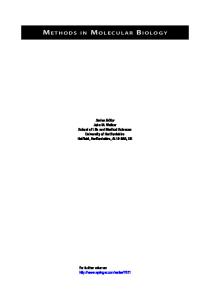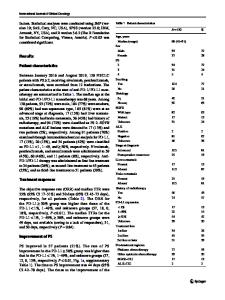Low Oxygen Stress, Nonsymbiotic Hemoglobins, NO, and Programmed Cell Death
Class 1 nonsymbiotic hemoglobins are upregulated during oxygen deprivation in plant cells. Their expression, under conditions of low oxygen stress, has been shown to help maintain energy and redox status, increase the capacity for removing reactive oxygen
- PDF / 266,822 Bytes
- 18 Pages / 439.37 x 666.142 pts Page_size
- 98 Downloads / 398 Views
Abstract Class 1 nonsymbiotic hemoglobins are upregulated during oxygen deprivation in plant cells. Their expression, under conditions of low oxygen stress, has been shown to help maintain energy and redox status, increase the capacity for removing reactive oxygen and nitrogen species, and improve the capability of the plant to withstand the stress. They are efficient scavengers of NO that is produced in significant quantities during oxygen deprivation. NO is a known factor involved in triggering programmed cell death in both plants and animals. It is hypothesized that nonsymbiotic hemoglobins regulate the onset of programmed cell death by scavenging NO. The expression, or non-expression, of a nonsymbiotic hemoglobin within a specific cell would, therefore, determine whether the cell proceeds towards programmed cell death in situations where NO is a factor triggering the process.
Nonsymbiotic plant hemoglobins (nsHbs) have been associated with oxygen deprivation since their discovery in 1994 (Taylor et al. 1994). Physiological research of nsHbs has continued to focus on their role in oxygen deprivation, but interest has also developed in their possible roles in plant disease responses and other plant developmental characteristics (Hill 2012). In this chapter, we will review some of the properties of nsHbs, examine what is known about their physiological function, and propose a mechanism by which they may be involved in programmed cell death (PCD).
A.U. Igamberdiev Department of Biology, Memorial University of Newfoundland, St. John’s, NL, CanadaA1B 3X9, C. Stasolla • R.D. Hill (*) Department of Plant Science, University of Manitoba, Winnipeg, MB, CanadaR3T 2N2, e-mail: [email protected] J.T. van Dongen and F. Licausi (eds.), Low-Oxygen Stress in Plants, Plant Cell Monographs 21, DOI 10.1007/978-3-7091-1254-0_3, © Springer-Verlag Wien 2014
41
42
A.U. Igamberdiev et al.
1 Properties of Plant Hemoglobins Plant hemoglobins have been grouped into three classes: class 1, class 2, and truncated (class 3). In class 2 and, to a lesser extent, in class 1, there is an evolutionary trend from nonsymbiotic hexacoordinated to symbiotic pentacoordinated hemoglobins (Gupta et al. 2011; Vazquez-Limon et al. 2012; Vinogradov et al. 2011). Nonsymbiotic class 1 hemoglobins (nsHb1) are distinguished from other classes by a low value of the hexacoordination equilibrium constant (KH). This constant reflects the extent of the interaction of the distal histidine with the heme iron, and describes the equilibrium of pentacoordinated and hexacoordinated species that influence the binding of ligands. The weak hexacoordination of histidine in class 1 hemoglobins causes an extremely high avidity of the hemoglobin for oxygen (Hargrove et al. 2000) resulting in an oxyhemoglobin dissociation constant in the nanomolar range. Rapid oxygen binding results in protein conformational changes that prevent fast oxygen dissociation from the heme site. Upon ligand binding, the distal histidine moves away from the iron atom resulting in an overall
Data Loading...











